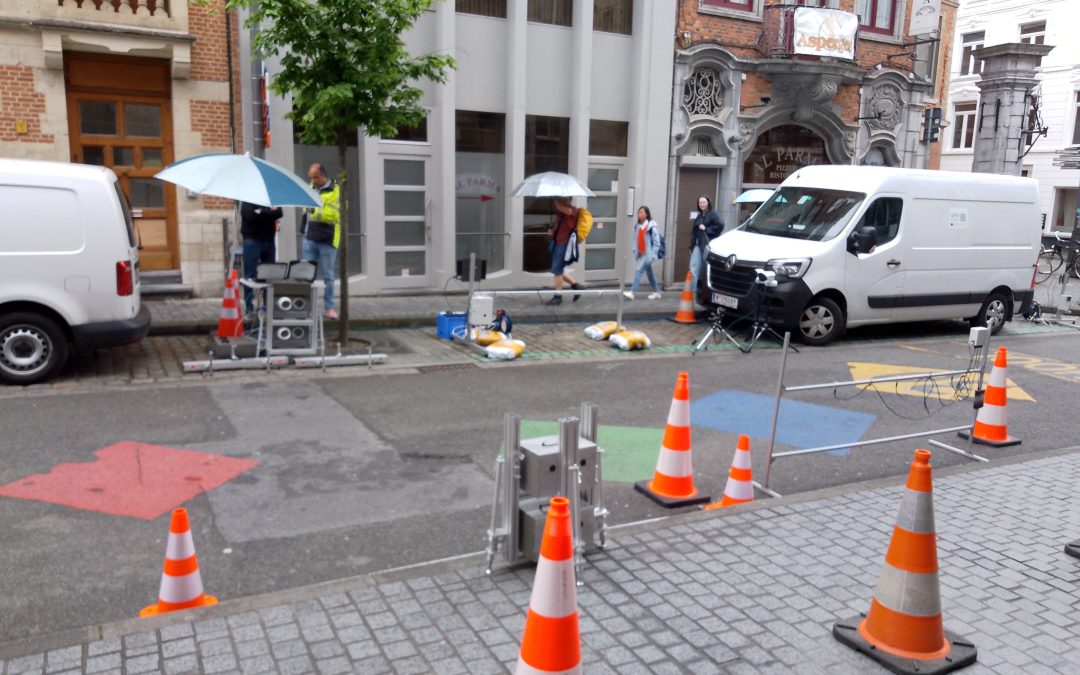The first LENS tampering in-field survey and roadside measurement campaign, which took place last week (13-16 May) in Leuven (BE), was successful, as more than 160 vehicles were tested. This number was achieved by a fruitful cooperation between IVL, KU Leuven, TU Graz, Opus RSE and the Leuven city police. In addition, a joint visit by our stakeholder group allowed external parties to observe the live tests. Let’s take a closer look at what was tested, how the results will be processed in the coming weeks and why several different locations were chosen.
How was the noise and air pollution of L-vehicles tested?
Several entities cooperated with the Leuven police and organiser Ake Sjodin (IVL) to ensure a smooth pollution test, including the orchestrating of the roadside inspections by the Leuven police, the registration of noise emission data collected by KU Leuven, and several sensors and cameras to record air pollution information monitored by TU Graz and Opus RSE. Each of the tested L-vehicles passed through the following three tests:
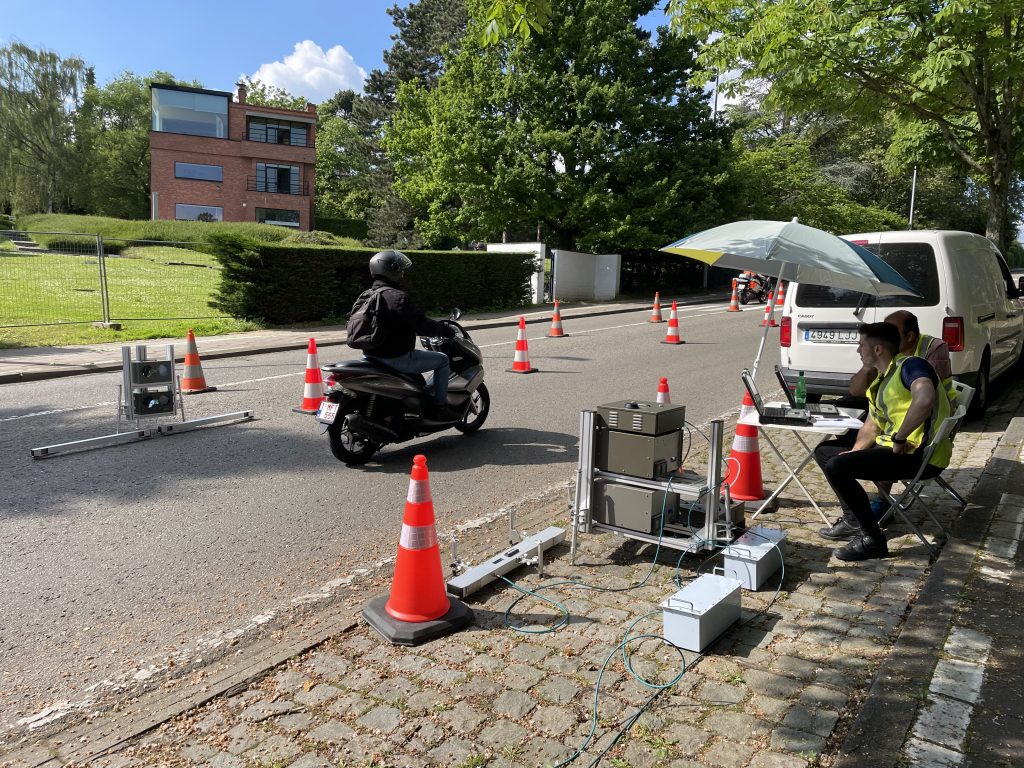


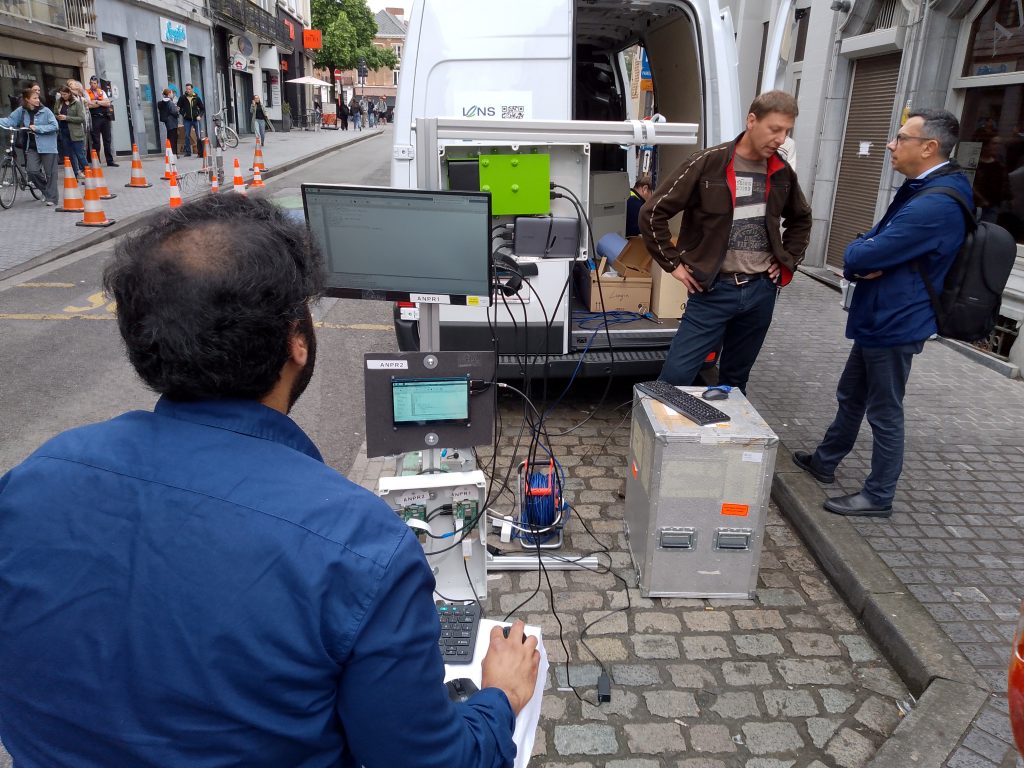
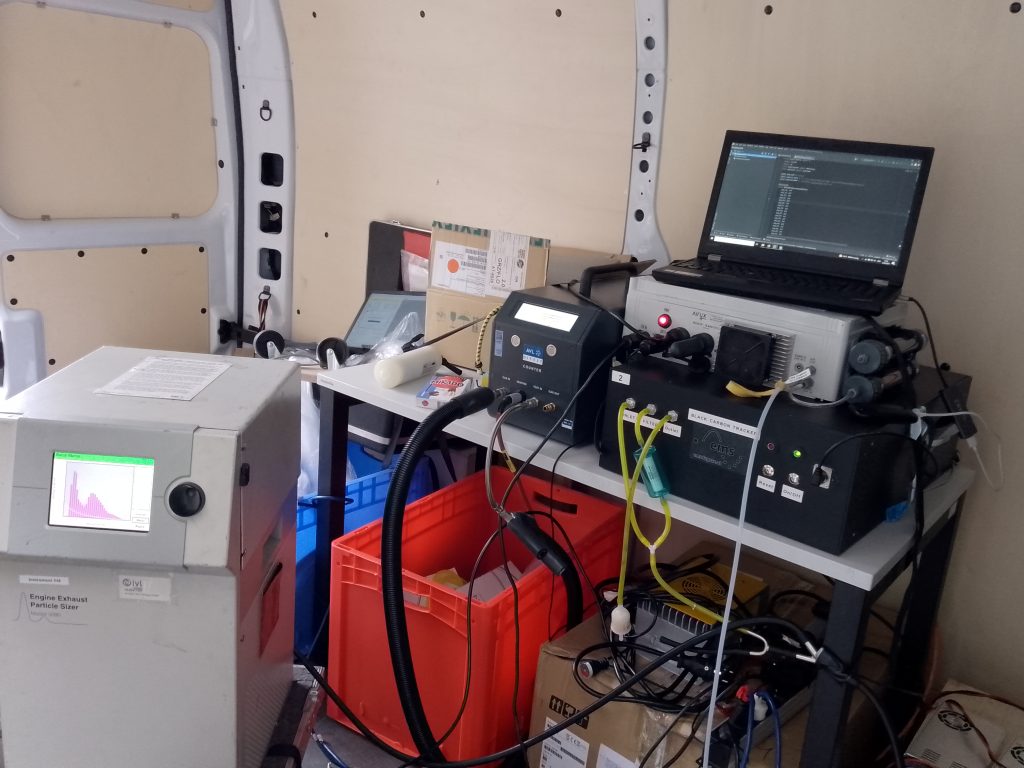
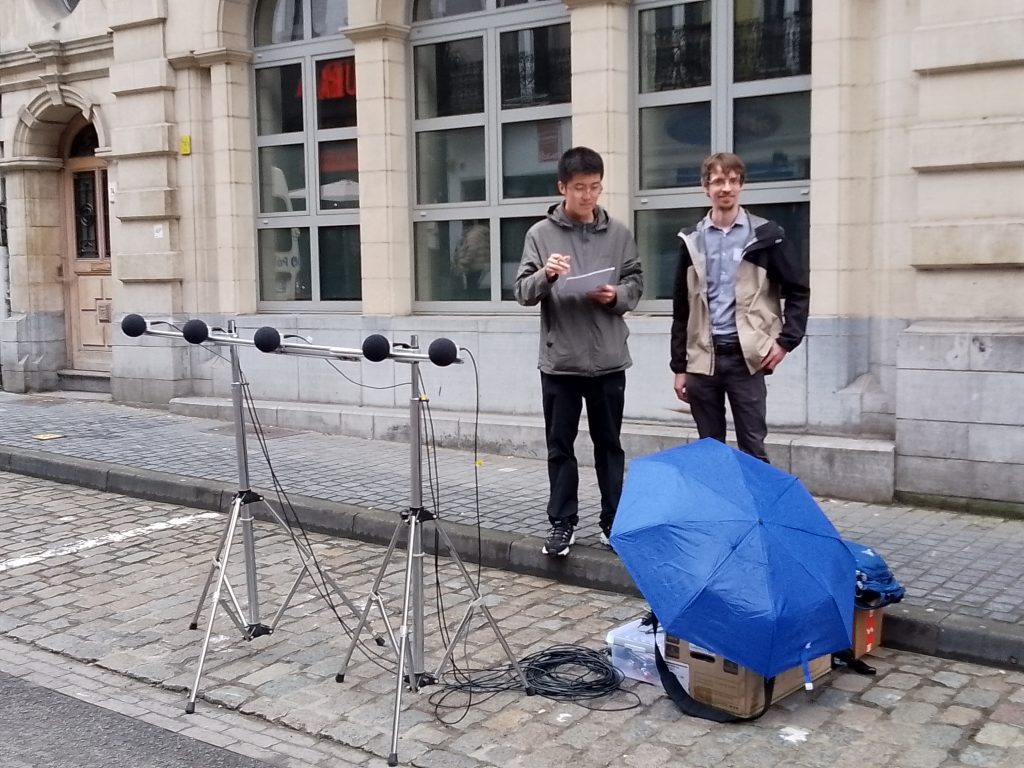
Noise pollution
A linear array of five microphones was used to continuously monitor the sound pressure level of passing L-vehicles. The measurement system automatically started recording when the sound pressure level exceeded a threshold due to a passing vehicle. From these recorded signals, a wide range of features will be computed or extracted using AI methods. These will be analyzed in the upcoming months to identify the most suitable set of features to identify tampering.
Air pollution
As part of the air pollution measurement, the speed and acceleration of the L-vehicle are measured using light barriers and the vehicle is registered using an AI-based automatic number plate recognition system. In addition, the air is measured by ‘point sampling’, which includes several instruments to measure different aerosols (particulate matter and number) and gases (CO2, NOx and others). In addition, a stripe image is produced, which is used to visually assess the exhaust gas. The size and density of the cloud provides a visual indication of the vehicle’s emissions and whether the L-vehicle deviates from the norm.
Roadside inspections and test for detection of tampering
The roadside inspections were carried out by the Leuven police together with a L-vehicle expert from TU Graz after the driver of the L-vehicle had gone through the above-mentioned instruments. After being pulled over to stop at the roadside, this procedure included a check of the vehicle documents, a visual inspection of the vehicle, and a carbon monoxide (CO) and hydrocarbon (HC) idle test. On one of the days during the campaign, also a stationary noise test was conducted with a handheld dB meter. It is a test described in the EC regulations on type approval of L-vehicles (see Commission Delegated Regulation (EU) No 134/2014) and implemented in national law by the member states. After modifications, any L-vehicle should still pass this test within the tolerances and specifications described in the regulations.
Why did LENS select two different test sites?
A number of parameters were taken into account when selecting suitable L-vehicle test sites, including sufficient L-vehicle traffic, a gradient that requires sufficient load on the engine of the vehicle, relatively low ambient noise to avoid disturbance to noise measurement equipment, and sufficient space to park the van and install all the test equipment such as cameras, sensors, microphones and light barriers. Thanks to previous location scouting by IVL, KU Leuven, TU Graz and the local police, two locations were selected – an urban street and a busy access road into the centre of Leuven.
Although the focus of the urban test was to test various mopeds for food delivery during a late afternoon around the Tiensestraat, the proximity to the stakeholder event at KU Leuven had the positive side effect of allowing participants to observe the live test and ask questions. The second street, Donkerstraat, was the main test site for the remaining four days in Leuven. It allowed the team to operate in a more spacious environment to perform the measurements and check the L-vehicles after they had passed through the sensors. In addition, thanks to its proximity to the ring road around the city, the site provided a more diverse range of LVs (not only small scooters and mopeds, but also larger motorcycles) compared to the downtown site.
Leuven was a positive first step, which will inform the upcoming test campaigns
Overall, we can conclude that the test campaign in Leuven was a complete success, based on the laboratory tests and the development and calibration of the test equipment by the dedicated LENS partners over the last few months. Conclusions, results and experiences from the first test will also influence the upcoming test campaigns in Paris in mid-September and a test in autumn.

